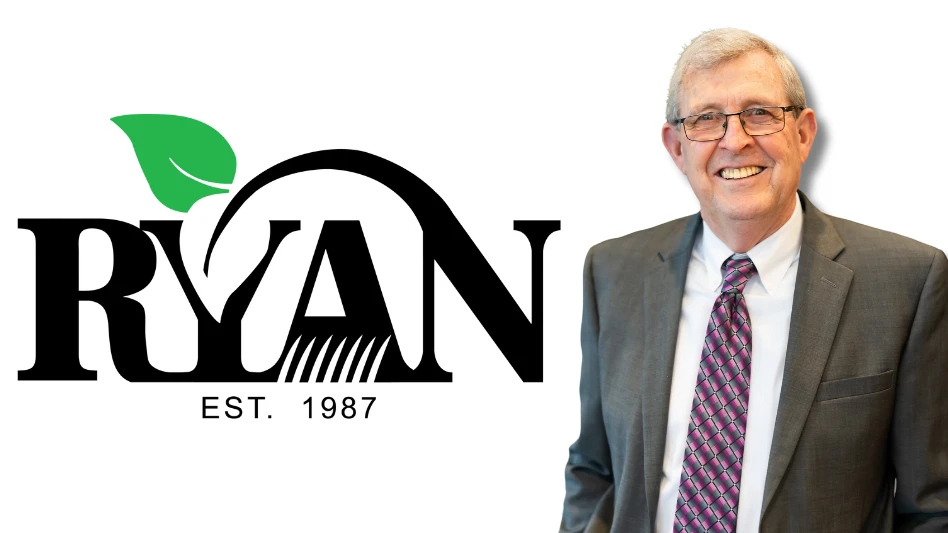Kick off your pre-game sales
Collecting payment for services before the season starts can build your business in two ways. First, that cash flow shot in the winter helps stoke spring operations. Second, by getting customers complete financial commitment, you avoid risking their business to competitors who might swoop in with glittery pre-season offers.
“Getting more paid-in-full customers is a business strategy, no doubt about it,” says Ewald Altstadt, vice president of operations and support services at Lawn Doctor, Holmdel, N.J.
Execution and timing are critical to securing pre-payment, but before a business can talk discounts, it should be taking a serious look at historical customer data and perhaps spending some time surveying clients to find out why they pay. “It’s not just, ‘Let’s give customers something for free.’ You have to put thought into where your business stands, what you want to be and what steps you’ll take to get there,’” Altstadt says.
He recommends conducting a sound analysis of the competition and their billing processes. And, of course, timing your pre-pay offer is everything. Though Aldstadt says there’s never a bad time to encourage customers to pay in full. “To me, paid-in-full is a sales opportunity and it really can be done any month depending on what works best into your overall business strategy,” he says.
This month, Lawn & Landscape spoke to three firms to learn how they encourage customers to pre-pay for service rather than billing accounts monthly.
 The pre-pay graduate
The pre-pay graduate
Asking customers for pre-payment is part of the company culture at Weed Man Cleveland.
“You’re always asking for referrals, and same goes for pre-payment,” says Phil Fogarty, president.
The franchise offers customers three big chances to save on their annual lawn care services, and pokes them with this offer at every opportunity – through e-mail, mailings, on renewal letters and in person when technicians are servicing accounts.
About 35 percent of Weed Man Cleveland’s customers pre-pay for services before spring. Fogarty begins marketing discounts in October, offering up to 10 percent off for early birds who pay before Christmas. Once the calendar year turns, the discount drops to about 7 percent. Finally, after the first service, customers can pay for the rest of the season and save about 5 percent.
Graduated discounts encourage customers to buy early and pay in full.
“There is a certain population of customers who will pre-pay for any discount and just by offering one, you’ll get as much as 5 to 7 percent” of customers to pre-pay, Fogarty says.
Then there is the population of customers who want vendors to show them the money – they expect bigger discounts, better offers. Fogarty plays to this group by giving pre-pay customers a discount plus a free service, such as aeration or grub control. Or, he’ll buy restaurant gift certificates in bulk and give $25 gift cards (he pays just $20 per card) to clients who agree to pre-pay.
The graduated discounts plus extra incentives capture 10 percent of customers before Jan. 1, and the remaining 25 percent or so of pre-pay customers trickle in at the beginning of the year.
The sooner Fogarty can get customers to commit to service and pay for it, the better. Pre-pay is a great way to lock in loyalty.
“We know they’ll get mail, phone calls and knock on the door from the competition, so if I can get them off the market and have their money six months in advance, it’s a huge incentive,” Fogarty says.
He makes it easy for customers to pay a lump sum by accepting credit cards. While a business can pay an average 3 percent for each credit card transaction, “It’s still worthwhile to get the customer’s money into your account,” Fogarty says.
Credit cards might buy a customer a year’s time interest free to pay off the service, and Fogarty gets the payment immediately and can direct that cash flow toward spring expenses.
Despite the economy, Fogarty says pre-pay is still appealing to customers – and perhaps more so today because customers are looking for ways to save. “We found that people were looking for the best bargain,” Fogarty says. “People have become more savvy shoppers in the last few years, and they’re looking for ways to achieve the best price and get the brand they want.”
Pre-pay accomplishes both and gives Fogarty a strong indication of the company’s retention rate.
“Whenever we have a higher pre-payment rate, we save in billing costs and our customer retention rate is higher,” he says.

 The early bird
The early bird
Don’t wait until February to send out pre-pay offers to customers. By then, the competition might have lured away your clients.
“Pre-pay letters are probably the most valuable part of your mailing campaign,” says Mike Dauer, marketing coordinator for the Scotts LawnService franchise owned by Joe Kucik in Lansing, Mich. “You need a decent offer to get customers to pre-pay, and you need to make sure your timing is correct.”
Timing those letters is different now than it was five years ago, according to Dauer. But then, the driver for getting customers to pay early is also different. “Five years ago, pre-pays were important for us to generate revenue in January to keep the cash flow coming into the business because we didn’t do any servicing in December, January and February,” Dauer explains. “By generating pre-pay dollars, we didn’t have to lay off people for those three months and we had some marketing money to use prior to our season.”
Now, pre-pay is a vehicle for securing client loyalty. Period. “We want to lock in our customers so our competitors can’t steal them,” Dauer says bluntly.
By sending pre-pay letters to existing clients before Thanksgiving that offer to lock in services at the current price plus a 5 percent discount, the franchise generally gets 10 percent of its 9,000 customer base to pay before year-end. Clients who don’t respond get another offer letter in January and can save 3 percent on services. At that point, another 10 percent of customers generally pay and save.
The letter’s language is key for encouraging customers to pay early, Dauer says. “You want to thank them for being a valued customer,” he says. “Let them know how important they are to your success.”
Next, the letter reminds customers that services are recurring. Clients won’t receive another contract to continue services. (At least in Michigan. Some states, like New York, require customers to resign a contract each year.) The letter also includes an upsell offer. “We take that opportunity to let customers know that they don’t have aeration or grub control,” Dauer says.
Finally, the letter spells out how much customers will save by pre-paying. Giving customers exact numbers helps them make the decision to commit financially before the season starts. Because prices do increase each year, that offer to “lock in” pricing is a real incentive for clients, Dauer adds.
Dauer says the pre-pay letters go out earlier every year. “I think pre-pay letters can go out any time after the last application is done,” he says.
Getting that money in the bank gives the franchise reassurance that its customer base will remain strong, and that operations will continue comfortably in the off-season. “It helps our cash flow,” Dauer says. “But in today’s world, the No. 1 reason for pre-pays is to lock in our customers so the competition won’t take them away.”

 The smart shopper
The smart shopper
When customers pre-pay for services, Mark Baker can pre-pay for lawn care products. “By getting money in early, that gives us an extra lump sum in our account so we can turn around and buy our fertilizers at a discount,” says Baker, owner of Turfmaster in Fort Wayne, Ind.
Baker’s customers get a 5 percent discount on services, or 10 percent off if they agree to add a pesticide treatment or grub control service. Baker’s vendors give him a similar discount on fertilizer and other products he pays for before spring.
That way, if Baker needs a new piece of equipment, he can pay for it in cash rather than racking up a line of credit. “It’s always a plus if we can pay cash for something rather than financing it,” he says, adding that he prefers to do business the conservative way, and keeping a healthy cash flow is the key.
After a rough winter for snow services, those lawn care pre-pays are a “super shot” to the bank account, Baker relates. “If times are a little bit tight, we might need that extra boost to get us up and going in the spring.”
About 10 to 15 percent of Baker’s customers are willing to pay for lawn care services before February. Baker spells out the details of potential savings on a form he distributes to each client at the end of the season, along with renewal letters. The forms compare how much the service costs with and without the discount. If customers add a service, they get that boosted 10 percent discount, which can amount to a free service depending on the size of the property.
The sheer convenience of pre-pay is appealing to his loyal customer base. “They can write one check so they don’t have to worry about payment anymore,” Baker says.
Baker isn’t too worried about his clients jumping ship, though he has started to send renewal letters out before New Year’s Eve to be sure his customers aren’t tempted by other offers.
“We have such tight-knit clientele, and they’re comfortable with us,” Baker says. “They know we aren’t going to be here today, gone tomorrow.”
Customers believe that their prepayment is a value. “It goes back to them trusting that we are going to do what we say we are going to do,” Baker says.
On the other hand, selling pre-pay services for snow and maintenance is much more difficult, Baker says. When snow customers thought a lump-sum price paid at the beginning of the season would buy them unlimited snowplowing – whatever it took to get the job done – they were happy to cut a check before the white stuff started falling.
But once Baker outlined that the snow package included up to 15 plows – and that more plowing required more payment – then customers shied away from pre-pay.
“If they didn’t know they’d be ahead of the game, they didn’t want to play,” Baker remarks.
So Baker focuses pre-pay mostly on lawn care, where he finds the most success with customers. Because the service schedule is not sporadic like snow – Baker’s crews visit lawns seven times for applications – his customers know exactly how much and what they’re getting. There are no variables.
Feeling comfortable with the offer is the ultimate key to selling the service early for Baker. And for clients who aren’t sure, the pre-pay form that spells out the discount helps seal the deal. “The forms spell everything out, and once customers see that large savings, they know they’ll eventually pay for the service anyway, so they figure, ‘Why not pay for it now?’”

The author is a frequent contributor to Lawn & Landscape.

Explore the October 2010 Issue
Check out more from this issue and find your next story to read.
Latest from Lawn & Landscape
- LMN partners with Attentive.ai
- Get to know the generations working for you
- Addressing addiction in landscaping
- Fairway expands national footprint with 6 acquisitions
- Graze Robotics opens new headquarters in Plano, Texas
- Addiction in the green industry
- Kress earns Sourcewell approval
- The best laid plans





